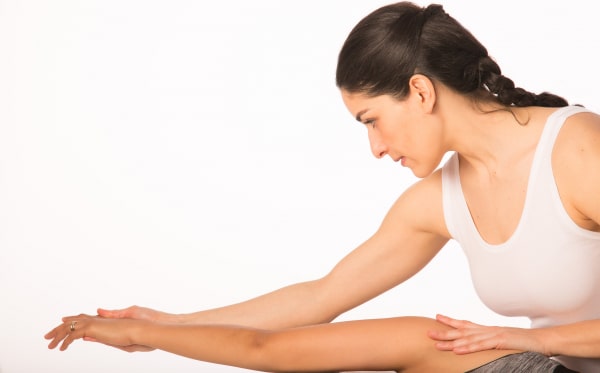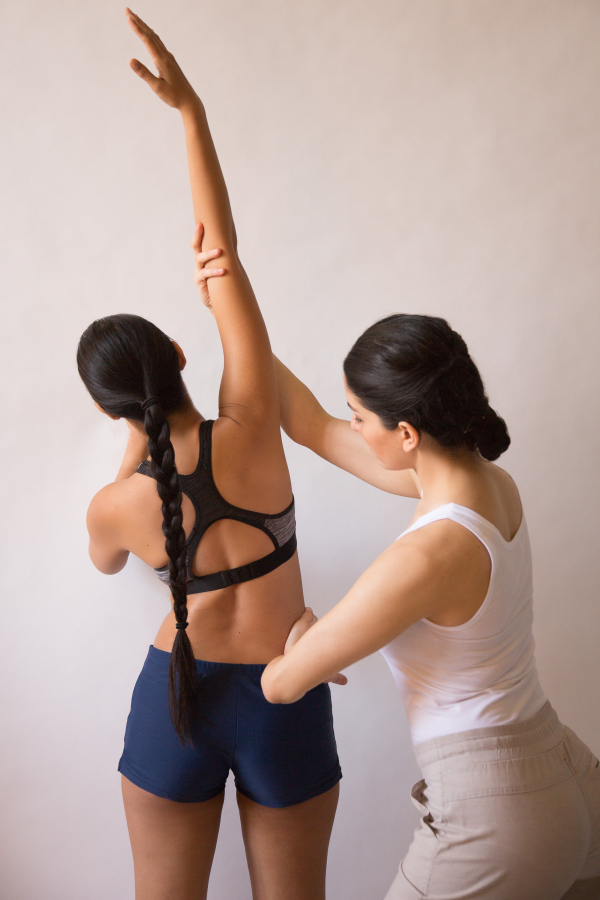Rolfing® Si & Yoga

Rolfing® Si & Yoga
Delara Tiv is a certified Rolfer™ which makes her a distinguished yoga and dance teacher; guiding the students to explore their own body, movement and mind and body connection. Through Rolfing® Structural Integration, Delara will have the opportunity to help the students to have better posture and awareness and to attain the maximum potential and efficiency in breathing and ease in movement.

What is Rolfing® Structural Integration?
Rolfing Structural Integration is a form of hands-on manipulation and movement education developed by Dr. Ida P. Rolf over 50 years ago. It works on the web-like network of connective tissues, called fascia, to release, realign and balance the whole body, potentially resolving discomfort, reducing compensations and alleviating pain. Rolfing aims to restore flexibility, revitalise your energy and leave you feeling more comfortable in your body. Rolfing Structural Integration may enhance your posture and freedom of movement.
Dr. Ida Rolf, the developer of Rolfing, was influenced by Hatha Yoga. She researched and practiced it to alleviate her own back pain from scoliosis, and that practice contributed to the evolution of her Rolfing principles. She aligned her vision of Rolfing with the goals of yoga in enriching body, mind, and spirit through an understanding of the importance of structural balance.
Many who do yoga now reach out to Rolfing to improve performance in their practice and to gain a better knowledge and undrestanding of how their body functions. Since Rolfing eases movement, it makes asana practice easier and speeds the process of creating space and length in the bodies that are very stiff. Rolfing can also help to regain flexibility that is lost due to age, injury or inactivity. Rolfing’s influence on alignment and posture will also help those hoping to achieve more advanced yoga poses and to move with more awareness.
To know more about Rolfing® Structural Integration click here.

Rolfing Can Give You a Deeper Understanding and a Chance to Explore :
- Movement patterns that lead to tensions and asymmetry in the body together with the client.
- To move more ergonomically – with better balance and efficiency with regard to gravity.
- How to engage Mula Bandha and Udiyana Banda by expeiencing the connection of the medial arch of the foot to the pelvic floor. The proper connection of feet to the ground turns on the bandhas in a natural way, rather than squeezing and contracting the pelvic floor and the abdomen to activate the Bandhas.
- The importance of balance between the Trapezius and Serratus Anterior to be able to safely and correctly do asanas that require balancing on the arms and Chaturanga (plank position)
- Efficient belly and thoracic breathing.
- Expanding in a 3 dimensional way in every asana, and how this perception engages your core naturally.
- Explore the true meaning of core within you that helps you stand and sit vertically in an effortless way. If the core is engaged in a proper way our body will have the freedom to express and move more freely.
- Explore how by co-ordinating the right parts of the body and moving with a different consciousness and intention you can bring ease into movement.
How is Rolfing® Different From Other Techniques?
In most massage techniques we seek treatment for a particular issue and the practitioner will address the symptoms which we present. These corrective practices overlook the way the whole body is integrated in gravity and how a local intervention has an effect on the entire system.
Over the years Rolfing has developed this Integrative approach to include the importance and understanding of how the structural organisation of the body effects its function (how we move), movement patterns and emotional trauma. Within the process of the 10 sessions a Rolfer and client may work to release trauma, suppressed emotions and limiting world views.
